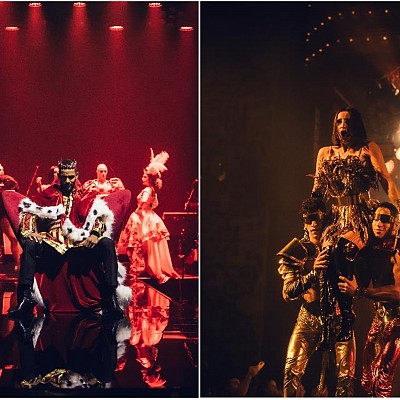Hats have been a significant part of human attire for centuries, serving various functions from protection to status symbols. Their evolution over time reflects changes in fashion, culture, and society. This article explores the journey of hats from ancient times to the present day, highlighting their enduring appeal and timeless nature.
Ancient Beginnings
The earliest hats date back to ancient civilizations. In Ancient Egypt, hats were a symbol of status and power. Pharaohs wore elaborate headdresses adorned with gold and jewels, while commoners used simple cloth to protect themselves from the harsh sun. Similarly, in ancient Greece and Rome, hats like the petasos and pileus were worn for practical purposes, such as shielding the head from the elements.
The Middle Ages
During the Middle Ages, hats became more structured and varied in style. The chaperon, a type of hood with a long tail, was popular among both men and women. The hennin, a tall, cone-shaped hat, became a symbol of nobility for women in the 15th century. This period also saw the introduction of brimmed hats, which provided better protection from the sun and rain.
The Renaissance and Baroque Eras
The Renaissance brought a renewed interest in fashion and personal expression. Hats became more elaborate, often featuring feathers, jewels, and intricate embroidery. The cavalier hat, with its wide brim and feathered adornments, was a favorite among the upper class. During the Baroque era, men’s hats like the tricorne, with its distinctive three-pointed shape, became a staple in European fashion.
The 18th and 19th Centuries
The 18th century saw the rise of the cocked hat, or bicorne, which was popularized by military officers and statesmen. Meanwhile, women’s hats grew larger and more extravagant, with wide brims and elaborate decorations. By the 19th century, hats became more accessible to the general public. The top hat, introduced in the early 1800s, became a symbol of sophistication and elegance for men. Women’s bonnets, often adorned with ribbons and flowers, were essential accessories for Victorian ladies.
The 20th Century: A Century of Diversity
The 20th century brought significant changes to hat fashion, reflecting broader social and cultural shifts. The early 1900s saw the popularity of the cloche hat, a close-fitting hat worn by women during the Roaring Twenties. Men continued to favor fedoras and bowler hats, which exuded a sense of classic style.
The mid-20th century introduced more casual and practical hat styles. The beret, often associated with artists and intellectuals, gained popularity. The 1960s and 70s saw the rise of wide-brimmed hats and floppy hats, reflecting the era’s relaxed and bohemian vibe. Baseball caps became a staple in casual wear, symbolizing the growing influence of sports and leisure activities.
Contemporary Hat Fashion
Today, hats remain a versatile and stylish accessory. They come in a variety of shapes, sizes, and materials, catering to diverse tastes and occasions. Modern fashion has embraced both classic and contemporary hat styles, making them a timeless staple in wardrobes around the world.
Fedoras and panama hats offer a touch of sophistication, while beanies and bucket hats provide comfort and practicality. Straw hats are popular for summer outings, and felt hats offer warmth and style in colder months. Hats are also seen as powerful fashion statements on runways and in street style, often used to complete an outfit and express individuality.
The Timeless Appeal of Hats
The evolution of hats demonstrates their enduring appeal and adaptability. Throughout history, hats have served as practical items, fashion statements, and symbols of status and identity. Their timeless nature lies in their ability to evolve with changing trends while maintaining their fundamental purpose.
Whether it’s a vintage cloche, a sleek fedora, or a casual baseball cap, hats continue to be a beloved and essential accessory. They not only protect us from the elements but also allow us to express our unique style and personality. The journey of hats through the ages is a testament to their lasting relevance and the significant role they play in the world of fashion.
Conclusion
The evolution of hats demonstrates their enduring appeal and adaptability. Throughout history, hats have served as practical items, fashion statements, and symbols of status and identity. Their timeless nature lies in their ability to evolve with changing trends while maintaining their fundamental purpose.
Whether it’s a vintage cloche, a sleek fedora, or a casual baseball cap, hats continue to be a beloved and essential accessory. They not only protect us from the elements but also allow us to express our unique style and personality. The journey of hats through the ages is a testament to their lasting relevance and the significant role they play in the world of fashion. For anyone looking to explore a wide range of stylish options, the American hat company offers an impressive collection that honors this rich history while catering to modern tastes.






































